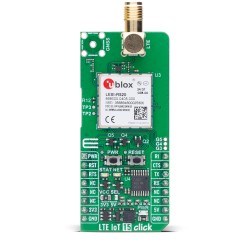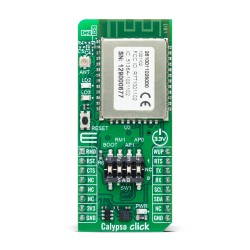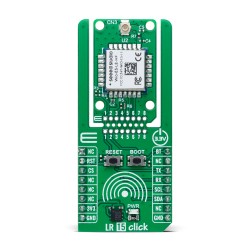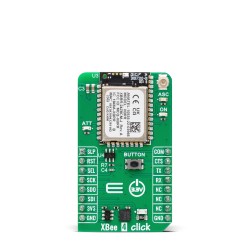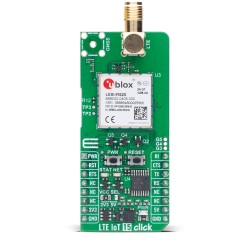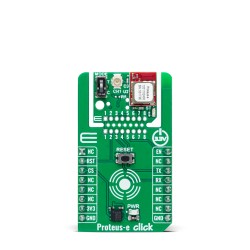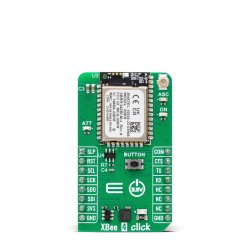Wireless sensor networks (WSNs) are transforming how we interact with the world.
They consist of small, distributed sensors that monitor various conditions. These networks are vital for the Internet of Things (IoT), enabling easy data collection and communication.
WSNs come in different topologies, each with unique benefits. Star, mesh, and tree topologies are common, each serving specific needs. Protocols like Zigbee, Bluetooth Low Energy, and LoRaWAN ensure efficient data transmission.
Click board™ solutions offer modular options for building WSNs. These plug-and-play modules simplify sensor integration. WSNs find applications in diverse fields, from environmental monitoring to smart cities.
Security and energy efficiency remain key challenges. However, advancements in technology continue to drive innovation. The future of WSNs looks promising, with expanding roles in IoT.
What Are Wireless Sensor Networks?
Wireless sensor networks (WSNs) consist of spatially distributed sensors that gather data about their surroundings. These sensors communicate wirelessly, forming a network that transmits data to a central system.
WSNs are critical in monitoring physical or environmental conditions. Common parameters include temperature, humidity, and light levels. This information can be used in diverse applications.
Key Features of WSNs:
- Scalable: Can adjust to various sizes and complexities.
- Reliable: Provides consistent data flow despite environmental challenges.
- Flexible: Easily modified to meet specific application needs.
The architecture of WSNs includes nodes, gateways, and base stations. Nodes collect data, gateways relay it, and base stations process the information.
These networks are integral to modern IoT solutions. They allow easy data exchange across multiple devices and platforms. This capability supports the development of smart technologies.
Key Components of Wireless Sensor Networks
Wireless sensor networks rely on several essential components. These components work together to ensure effective operation and data transmission.
Main Components:
- Sensor Nodes: Primary units for sensing data.
- Communication Links: Facilitate the transfer of data between nodes.
- Gateway: Acts as a bridge to external networks.
- Server: Collects and processes the data for analysis.
Sensor nodes are often equipped with sensors, a microprocessor, and a communication module. Each node plays a critical role in gathering data and sharing it with other nodes or the base station.
The successful operation of a WSN depends on the perfect integration of these components. By working harmoniously, they enable real-time data collection and communication across various distances.
Topologies in Wireless Sensor Networks
Wireless sensor networks can be organized in various topologies. These topologies determine how nodes communicate.
Common Topologies:
- Star: Central node connects to peripheral nodes.
- Mesh: Nodes interconnect, creating multiple pathways.
- Tree: Hierarchical structure with branches leading to nodes.
Each topology has its strengths and weaknesses. Selection depends on application needs and environmental factors.
Understanding these structures is crucial. It impacts network efficiency, reliability, and scalability.
Star Topology
Star topology features a central node connecting all peripheral nodes. This setup is simple to manage and energy-efficient.
Advantages:
- Simplicity: Easy to deploy and maintain.
- Energy Efficiency: Minimizes power consumption.
However, it has a significant drawback. The central node is a single point of failure.
Mesh Topology
Mesh topology allows nodes to connect with each other. This provides multiple communication paths.
Advantages:
- Robustness: Redundant paths ensure network resilience.
- Scalability: Easy to expand by adding nodes.
The complexity of mesh networks can increase setup costs and require more management.
Tree and Hybrid Topologies
Tree topology combines features of both star and mesh. It arranges nodes hierarchically.
Advantages:
- Balanced Structure: Mix of efficiency and redundancy.
- Hierarchical Data Flow: Streamlined communications in large networks.
Hybrid topologies blend elements of various topologies. This ensures they meet specific needs.
Choosing the right topology depends on the application. Each offers unique advantages and challenges.
Protocols for Wireless Sensor Networks
Protocols in wireless sensor networks ensure effective communication. They standardize how data transmits between devices.
Different protocols suit different needs. They vary in range, power consumption, and data rate.
Common Protocols:
- Zigbee: Ideal for low-power home automation.
- Bluetooth Low Energy (BLE): Suited for short-range applications.
- LoRaWAN: Provides long-range communication with low power.
Choosing the right protocol depends on the specific application. Factors like range, power, and network size are crucial.
Zigbee
Zigbee is known for its minimal power consumption. It excels in home automation and sensor networks.
Key Features:
- Low Power: Extends the life of network nodes.
- Reliable: Offers secure communication pathways.
Zigbee supports mesh networking, enhancing connection reliability in larger setups.
Bluetooth Low Energy (BLE)
Bluetooth Low Energy is designed for close-proximity communication. It supports wearable tech and smart devices.
Key Features:
- Energy Efficient: Uses minimal power for data exchange.
- Short Range: Effective for small-scale networks.
BLE is ideal for applications needing frequent low-energy connections, like fitness monitors.
LoRaWAN
LoRaWAN excels in wide-area networks. It provides robust links across great distances with low energy use.
Key Features:
- Long Range: Covers extensive areas efficiently.
- Low Power: Reduces sensor battery drain.
LoRaWAN is perfect for agriculture and smart city implementations needing large-scale coverage.
Selecting a protocol is pivotal. It determines the wireless sensor network’s efficiency and scalability. Each option offers unique benefits for different scenarios.
Click board™ Solutions for WSNs
Click board™ solutions offer flexibility in wireless sensor networks. They simplify the design and deployment process.
These modular boards allow quick sensor integration. You can customize and expand networks easily.
Click board™ modules are plug-and-play. This feature reduces development time significantly.
Key Features of a Click board™:
- Modular Design: Easy swapping of different sensors.
- Plug-and-play: Simplifies sensor and interface integration.
- Scalable: Expands to match network growth needs.
Their adaptability makes Click boards™ appealing for diverse applications. Users can tailor solutions to specific requirements.
Example Click board™ Modules for WSNs
Several Click board™ modules cater to different aspects of wireless sensor networks. These options ensure versatile network development.
Popular Modules:
- LR 15 Click: For applications such as wireless meter reading, sensor networks, and low-power wide-area network (LPWAN) systems.
- LTE IoT 15 Click: Ideal for asset tracking, wearables, smart metering, remote monitoring, and connected healthcare.
- ZigBee Click: Can be used for ZigBee smart energy applications, wireless alarms and security, remote monitoring, and other electronic applications that need wireless communication.
- Proteus-e Click: Found in industrial automation systems, remote monitoring of sensors, smart home devices, and wireless control systems.
Each module focuses on a specific function, contributing to a streamlined WSN design process.
Internet of Things and Wireless Sensor Networks
Wireless sensor networks play a crucial role in the Internet of Things.
The integration of WSNs with IoT enhances connectivity. It provides real-time data flow to IoT devices.
WSNs support automation and smart decision-making. They are pivotal in many IoT solutions, driving efficiency and innovation.
Key Roles of WSNs in IoT:
- Environmental Monitoring
- Healthcare and Wearables
- Smart Cities and Industrial Automation
The collaboration between IoT and WSN unlocks countless possibilities across sectors.
Environmental Monitoring
WSNs are essential in tracking environmental data. They collect metrics like temperature, humidity, and pollution levels. This data helps in understanding and managing natural resources effectively.
Key Uses in Environmental Monitoring:
- Temperature Measurement
- Humidity Detection
- Pollution Tracking
These networks provide critical insights for sustainable practices.
Healthcare and Wearables
In healthcare, WSNs improve patient monitoring. They enable the use of wearable devices for health tracking. These devices provide real-time data, enhancing patient care and diagnosis.
Applications in Healthcare:
- Patient Monitoring
- Wearable Health Devices
WSNs revolutionize healthcare with continuous monitoring capabilities.
Smart Cities and Industrial Automation
Smart cities leverage WSNs for efficient operations. They manage traffic, waste, and energy systems. In industries, WSNs automate processes, improving productivity and safety.
Key Uses in Smart Cities and Industry:
- Traffic Management
- Waste and Energy Efficiency
- Process Automation
WSNs drive the transformation towards smarter urban and industrial environments.
Challenges in Wireless Sensor Networks
Wireless sensor networks face several challenges, despite their many advantages. Security and energy management are two critical concerns affecting their effectiveness. Ensuring data integrity and securing communication channels is paramount for WSNs.
The complexity of maintaining energy efficiency in WSNs cannot be ignored. Power constraints limit the lifespan and performance of sensors. Efficient energy management strategies are vital for network sustainability.
Major Challenges in WSNs:
- Security and Privacy
- Energy Efficiency
- Network Scalability
Addressing these issues is crucial for WSN success.
Security and Privacy
Securing WSNs involves robust encryption methods. Data confidentiality and integrity require strong authentication mechanisms. Vulnerabilities in WSNs could lead to significant breaches.
Key Security Concerns:
- Data Encryption
- Authentication Protocols
Ensuring robust security measures is critical for WSN reliability.
Energy Efficiency and Power Management
Efficient energy use extends the life of WSNs. Techniques like duty cycling and energy harvesting are employed. These strategies help overcome power constraints in sensor networks.
Essential Energy Management Strategies:
- Duty Cycling
- Energy Harvesting
Effective power management ensures sustainable WSN operation.
Future Trends in Wireless Sensor Networks
Wireless sensor networks are poised for exciting advancements. Increasing integration with artificial intelligence will enhance their capabilities. AI will enable predictive analytics and smarter decision-making in real-time.
Emerging trends focus on energy-efficient sensors, which will extend network lifespans. Easy connectivity with technologies like 5G will further boost data speeds and transmission reliability.
Prominent Future Trends:
- Integration with AI
- Development of Energy-efficient Sensors
- Enhanced Connectivity with 5G
The future of WSNs promises innovative solutions and expanded applications.
Conclusion
Wireless sensor networks play a crucial role in modern technology. They empower IoT with reliable data collection and transmission capabilities.
As WSNs continue to evolve, they will unlock new possibilities across diverse industries. Enhanced efficiency and smart solutions are on the horizon, promising a more connected and intelligent world.
Modular Click boards™ Driving Flexible Wireless Sensor Networks
Building effective wireless sensor networks means balancing range, precision, and adaptability. The Click boards™ showcased below - ranging across GNSS, LTE, Bluetooth audio, Calypso RF, LoRa®, and XBee® wireless modules - bring industry-grade connectivity to your prototypes. Thanks to their modular mikroBUS™ interface, these plug-and-play boards let developers explore diverse topologies and protocols quickly, whether you're extending network reach, enabling local mesh interactions, or combining positioning with real-time data transfers. This flexibility allows you to adapt and optimize your sensor network design with ease, tailored to any environment or use case. Check out our full range of Wireless Connectivity Click boards™.
EmbeddedWiki: Real-World Wireless Sensor Network Projects
Want to see these wireless modules in action? EmbeddedWiki is your go-to hub for hands-on project examples that showcase how Click boards™ can power real-world networks - from remote sensing stations to mesh-enabled automation systems. Complete with schematics, source code, and deployment guidelines, the guides demonstrate how modular wireless interfaces speed up development and provide robust, scalable solutions for sensor-based applications in any industry.
ABOUT MIKROE
MIKROE is committed to changing the embedded electronics industry through the use of time-saving industry-standard hardware and software solutions. With unique concepts like Remote Access, One New Product/Day, Multi-Architectural IDE and most recently, the EmbeddedWiki™ platform with more than million ready-for-use projects, MIKROE combines its dev boards, compilers, smart displays, programmers/debuggers and 1850+ Click peripheral boards to dramatically cut development time. mikroBUS™; mikroSDK™; SiBRAIN™ and DISCON™ are open standards and mikroBUS only has been adopted by over 100 leading microcontroller companies and integrated on their development boards.
Your MIKROE
















